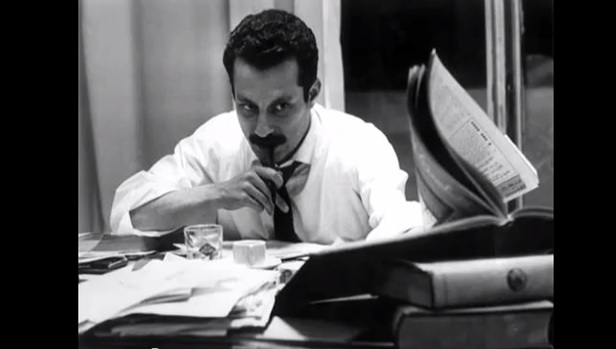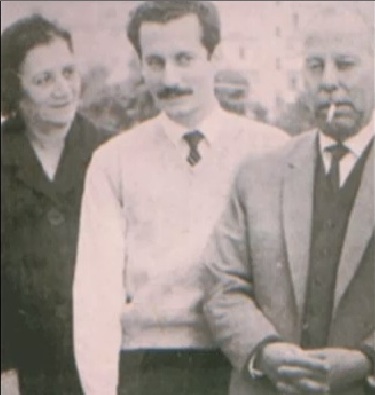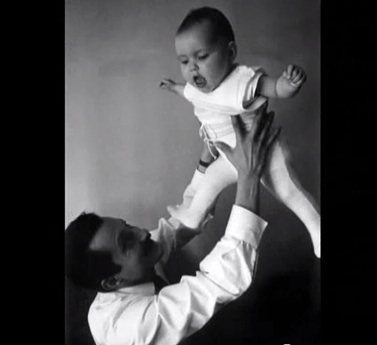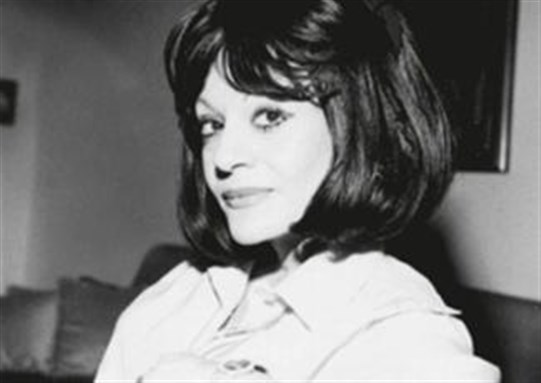[”A Profile from the Archives“ is a series published by Jadaliyya in both Arabic and English in cooperation with the Lebanese newspaper, Assafir. These profiles will feature iconic figures who left indelible marks in the politics and culture of the Middle East and North Africa. This profile was originally published in Arabic and was translated by Mazen Hakeem.]
Name: Ghassan
Last Name: Kanafani
Father’s name: Fayez
Place of birth: Acre
Date of birth: 1936
Date of death: 1972
Nationality: Palestinian
Category: Author
Profession: Writer and Journalist

Ghassan Kanafani
- Palestinian writer, playwright, journalist, and politician.
- Born in Acre on 9 April 1936.
- His father was a lawyer named Fayez and his mother was Aisha Al-Salem. After the Nakba of 1948, his family departed from Acre to Syria where he lived in Zabadani.
- His brothers and sisters are Marwan, Fayzeh, Ghazi, Hassan, No’man, and Suha.
- Started his study at Les Frères, a French missionary school in Jaffa. After his family`s displacement to Syria, he continued his studies in public schools. He completed his junior high school and in 1953, he started to teach at UNRWA schools in Damascus.
- Completed his high school in 1955 and went Damascus University where he studied in the Arabic Literature Department for three years. He was expelled shortly thereafter for political reasons. He later graduated from the university and his thesis was titled “Race and Religion in Zionist Literature.”
- In 1961, he got married to Annie, a Danish leftist activist, whom he met in Beirut while working the magazine Al-Horria (Freedom). Ghassan and Annie had two children--Fayez (24 August 1962) and Laila (12 October 1966). Annie remained in Beirut after his martyrdom and established the Ghassan Kanafani Cultural Foundation.
- Met George Habash in Damascus while he was working as an emender at the Al-Rai printing house--a newspaper which was published by the Arab Nationalist Movement. He joined the movement in 1954.
- Worked at Al-Rai newspaper in Damascus in 1955.
- Joined his sister Fayzeh in Kuwait in 1955 and worked as an Arts and Physical Education teacher for five years.
- Left Kuwait in 1960 to work in Al-Horria newspaper which used to be issued in Beirut. In 1963, he became the editor in chief of Al-Moharrer (The Editor) newspaper. In 1967, he became the editor in chief of the weekly supplement of Al-Anwar (The Lights) newspaper. In 1969, he became the editor in chief of Al-Hadaf (The Target), weekly magazine which was the mouthpiece of the Popular Front for the Liberation of Palestine (PFLP).
- Issued the Palestine supplement for Al-Moharrer newspaper in 1964.
- Participated in putting the political statement for the Popular Front for the Liberation of Palestine of which he was a member of the politburo and the official spokesperson in 1969.
- He used the pen names Fares Fares or A. F. (for Abu Fayez).
- Represented the Union of Palestinian Writers in the meetings of the executive office of the Union of Arab Writers in Cairo in 1971.
- Went to jail multiple times; the last time was in 1971 on the charge of “slander and defamation” of King Faisal and King Hussein in Al-Hadaf magazine.
- Assassinated on 8 July 1972 along with his niece Lamis in Al-Hazmieh district, near his house, via an IED which exploded underneath his car in Beirut by an agent of the Israeli Mossad.
- Won the “Friends of Books in Lebanon” award for best novel in 1966 for his novel ma tabaqqa lakom (What is Left for You). After his assassination, he was awarded the World Press Organization Prize in 1974. Then in 1975, he was gifted the Lotus Prize which is awarded by the Writers Union of Asia and Africa. He was awarded the Order of Jerusalem for Culture and Arts in 1990.
[On the left, Ghassan Kanafani between his parents. On the right, Ghassan Kanafani with his wife Annie, the Danish political activist]



Publications:
- Men in the Sun, Rijal fi al-shams, (1963). It was turned into a movie, al-makhdo’oun (The Deceived).
- What is Left for You, Ma tabaqqa lakom (1966).
- Um Saad (1969).
- Going Back to Haifa, A’aid ila haifa, (1970).
- Who Killed Laila Al-Hayek, Man qatal laila al-hayek, (1969).
- The Owl in a Distant Room, Al boomah fi ghorfah ba’eedah (published in Al-Rai newspaper).
- Fares Fares (1996).
- Death of Bed Number 12, Mawt sareer raqam 12, (1961).
- Land of the Sad Oranges, Ard al-bortaqal al-hazeen, (1963).
- Resistance Literature in Occupied Palestine, Adab al-moqawamah fi falasteen al-mohtallah, (1966).
- The Resistant Palestinian Writer Under Occupation, Al-adeeb al-falasteeni al-moqawem tahta al-ihtilal, (1968).
- About Zionist Literature, Fi al-adab al-sahyooni, (1967).
- The Door, Al-bab, (a play).
- His works were translated into the following languages: English, French, Spanish, Italian, German, Danish, Swedish, Norwegian, Hungarian, Polish, Dutch, Slovak, Czech, Russian, and Japanese.
- Sobhi Al-Hadeedi, a critic, described Ghassan’s work by saying: “He was able to transport the image of Palestinians from that of an inspirational hero without any lineaments to an image of a novelist character which moves in a clear space of personal, political, social, and psychological history.”
[First part of the movie "The Deceived" based upon the novel Men in the Sun by Ghassan Kanafani]
![[Palestinian writer and author Ghassan Kanafani]](https://kms.jadaliyya.com/Images/357x383xo/kanafani1111.jpg)

















